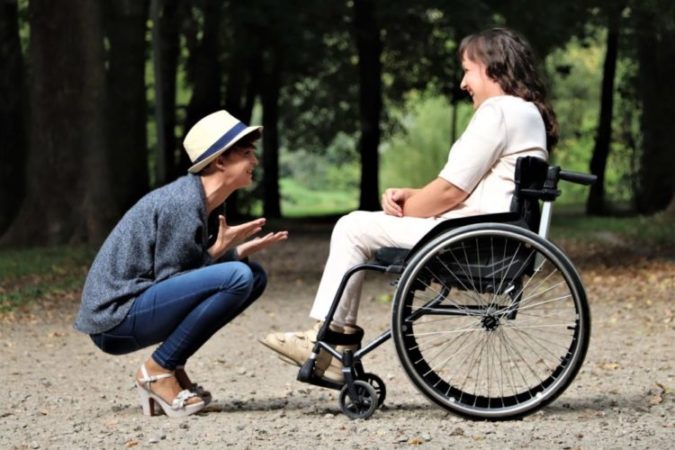
When patient mobility is limited, it’s important to find other ways to transfer the individual wherever they need to go. However, there are many different kinds of patient transfer devices. Therefore, it’s important to find the equipment you need for the right situations. That’s why we’ve compiled a list of the most common patient transfer devices, as well as what they are each used for.
Read on to find out what devices are right for you!
The Complete Guide to Patient Transfer Devices
1. Patient Lifts
Patient lifts help to transfer individuals from one place to another via short distances. Basically, there are different kinds of patient lifts that offer different transportation purposes. Here is a list of the most common patient lifts:
- Electric lifts: Electric full-body patient lifts make transferring patients from bed to chair, bath, or from the ground easy. Electric lifts come with a rechargeable battery that enables smooth, easy transportation.
- Manual lifts: Manual lifts are similar to electric ones, but they tend to have a more basic design. Instead of an easy transfer via a push of a button, manual lifts are operated by manually pumping up a hydraulic cylinder. While they tend to be harder to use than an electric lift, they are generally less expensive than electric lifts.
- Heavy-duty lifts: These lifts are generally electric and are meant for bariatric patients weighing 500 pounds or more. Bariatric patient lifts have a higher weight limit and a wider base that can fit around most lift chairs with ease.
- Stand-up lifts: These lifts help patients move from a sitting position to a semi-standing one. This makes it easy for patients to then move to a wheelchair or commode from an upright position. Stand-up lifts are meant for patients who have good upper body control and have at least 60% weight-bearing capacity. These lifts are available as electric or manual ones.
- Bath lifts: These lifts are used in a bathtub to raise and lower patients in and out of the water. All of these models are battery-operated, making bathing easy for patients who have a difficult time climbing in and out of a bathtub.
- Pool lifts: These lifts transport individuals in and out of swimming pools. You can purchase a pool lift for individual use, private use, or for public facilities. These lifts can make swimming fun and easy for those with limited mobility, as well as aid in water therapy exercises. You can purchase ADA compliant deck-mounted models or portable units that can be wheeled away for storage.
To choose the right lift for you, first determine what you need one for. Electric, manual, heavy-duty and stand-up lifts are great for general use, whereas bath and pool lifts have a more specific use. Secondly, it’s important to determine how mobile your patient is. If he or she can stand for short periods of time, a stand-up lift may be best. On the other hand, if he or she is a bariatric patient, a heavy-duty lift might be best.
To find the best lift for you, check out this helpful buying guide.
2. Wheelchairs
Wheelchairs are probably the most common patient transfer devices around. However, there are many different kinds of wheelchairs used as patient transfer devices. Here are the different kinds of wheelchairs available for purchase:
- Standard: These wheelchairs are perfect for individuals who can maneuver a wheelchair by themselves and who can stand up on their own. These chairs feature a holding frame, swing-away footrests and armrests, and a lightweight structure.
- Transport: Unlike standard wheelchairs, transport ones have a collapsible frame that allows for easy portability. They require a companion to push the chair and cannot be operated easily by the user. However, some transport wheelchairs have the option of converting to a standard chair.
- Lightweight: These chairs typically weigh under 35 pounds, making them ideal for patients who need a wheelchair for frequent use. These chairs include a foldable frame for transport, armrests, and removable swing-away footrests.
- Rigid Ultra Lightweight: These wheelchairs optimize performance for active individuals. These chairs are extremely light and make maneuverability easy and fun for patients who are always on the move.
- Tilt in Space and Reclining: Tilt in Space wheelchairs tilt back to provide comfort for those who cannot move on their own. These chairs tilt seamlessly with the help of a fixed or sliding pivot point. Reclining chairs do not tilt back from a pivot point, but offer similar functions. Both chairs are perfect for individuals who spend the majority of their time in a wheelchair.
- Standing: These revolutionary chairs are fully electric and use a joystick controller that allows patients to fully control the movement of the chair. You can maneuver these chairs into a stand-up mode, which allows patients to relieve pressure and gain more environmental access.
- Pediatric: These chairs provide optimum comfort for children through adjustable features.
- Heavy-duty: These chairs can accommodate users who weigh up to 850 pounds. Heavy-duty chairs are made with strong materials, have a wider frame, and are designed to provide optimum comfort to bariatric patients.
- Shower: Shower chairs are made from PVC and stainless steel for lasting durability. Essentially, they allow patients to transfer in and out of showers easily.
- Pool and beach: These wheelchairs are made for sandy beaches and wet environments. A fun day of swimming has never been more convenient!
With so many different types of wheelchairs, finding the right one isn’t always easy. Check out this wheelchair buying guide for more information about choosing the chair that is right for you!
3. Power Chairs
Power wheelchairs are ideal for individuals who want easier mobility than a typical wheelchair can provide. These patient transfer devices usually have more cushions on the seats for optimized comfort and full-electric maneuverability. There are three main types of power chairs to choose from:
- Standard: These power-operated wheelchairs are perfect for those who need easy, comfortable transportation.
- Portable: Portable wheelchairs make travel easy. They break down into smaller pieces in order to fit in a car. Additionally, these models are more lightweight than a standard power chair.
- Heavy-duty: These power chairs are ideal for heavier patients who need a higher weight capacity. Moreover, these chairs are more durable than other models, making all-terrain traveling easy and efficient.
4. Scooters
Scooters are a great option for patients who want easy mobility. However, there are many different types of scooters to choose from. Here are the most common types of scooters:
- Portable: You can disassemble these scooters into three main pieces, making it easy to store in the trunk of a car. Additionally, portable scooters are typically lightweight, making it easy to travel.
- Heavy-duty: These scooters are equipped with a wider seat and a weight capacity of up to 500 pounds. Heavy-duty scooters are perfect for heavier patients, for patients who tend to carry a lot of things at a time, and/or for those who need a more durable scooter for traveling.
- Three-wheel scooters: These have a light-weight traveling mechanism, making them easy to use. Many of these scooters come with smaller tires for less resistance when traveling. However, there are also all-terrain models, making traveling on any surface easier.
- Four-wheel scooters: These scooters have increased stability and offer a smoother ride for patients. They also have headlights and swivel seats for easy entry and exit.
Among these four basic types of scooters include standard, pediatric, luxury, and sport models. To choose the scooter that is right for you, it’s first important to determine what kind of terrain you will be traveling on, as well as how often you will be traveling. Check out this buying guide for more information.
5. Walking Assistants
Walkers, rollators, and canes are ideal for individuals who have the ability to move on their own but need added support. Here are some of the main types of equipment that can help transfer more independent patients:
- Walkers: These tools are lightweight and easy to use. Basically, patients use them to lean on for support when they are walking. In addition, walkers have adjustable height handles so patients can individualize their walkers.
- Rollators: Rollators serve the same function as walkers. However, while most walkers have feet, most rollators have wheels. For many patients, this feature makes it easier to move around. Additionally, most rollators have seats attached, making it easy for patients to sit no matter where they are. Rollators are thus better options for patients who need more support when walking.
- Canes: Canes help individuals who need little support when walking. For example, a patient who has an injury in one leg would benefit from using a cane.
- Hemi and knee walkers: These are basically a cross between a cane and a walker. They are more lightweight than a typical walker but offer more support than a cane. Unlike a walker, patients can use them at the side of the body rather than the front. On the other hand, patients use knee walkers instead of crutches or a walker. They have anywhere between two to four wheels and help patients who have an injury in the knee or lower leg.
- Pediatric walkers: These are for children and young patients who need assistance in walking.
To choose the right device for you, simply determine how much help you need walking and what part of your body needs the most support when you walk. For example, someone who needs optimum support when walking might choose a rollator, while someone who needs very little support might choose a cane.
>>Shop for walkers and/or rollators here
Purchase Your Patient Transfer Device Today!
If you or your patient needs a patient transfer device, Amica Medical Supply has the equipment you need at affordable prices! Contact them today for more information!



